How Demon’s Souls Bosses Set a Standard for the Dark Souls Franchise
The revolutionary Demon's Souls created several boss fight templates that Souls-like games follow to this day.
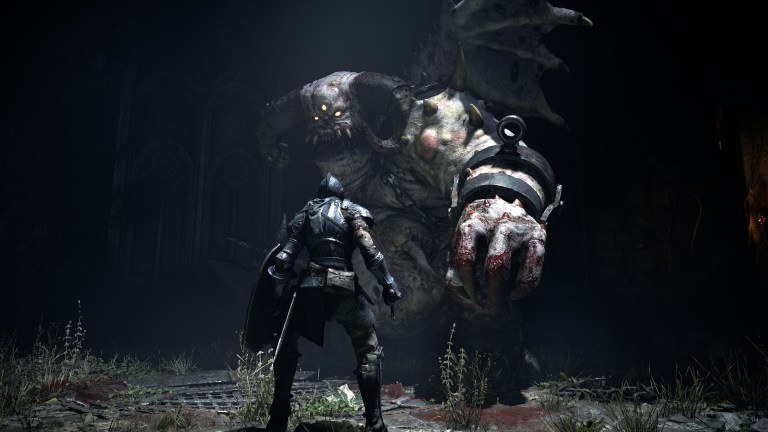
The recent reveal of the Demon’s Souls remake for PlayStation 5 has rightfully excited fans of the classic Action RPG. Not only was Demon’s Souls an incredible experience in its own right back in 2009 when it released on the PS3, but as the spiritual predecessor to Dark Souls and even Bloodborne, it’s the foundation of the legendary “Soulsborne” series. Despite its status as such, there are still some Dark Souls fans who’ve never played the original FromSoftware title that started it all.
If that’s the case for you, then you may not know the many ways Demon’s Souls shaped later Soulsborne games. That’s especially true of the game’s boss fights. As much as we love the boss fights in a Soulsborne game, many of them tend to fall into the formula established in Demon’s Souls.
So join us as we take a look at some of the most common types of boss fights in the greater Soulsborne franchise and examine how each of them can be traced back to one of the many legendary encounters in Demon’s Souls.
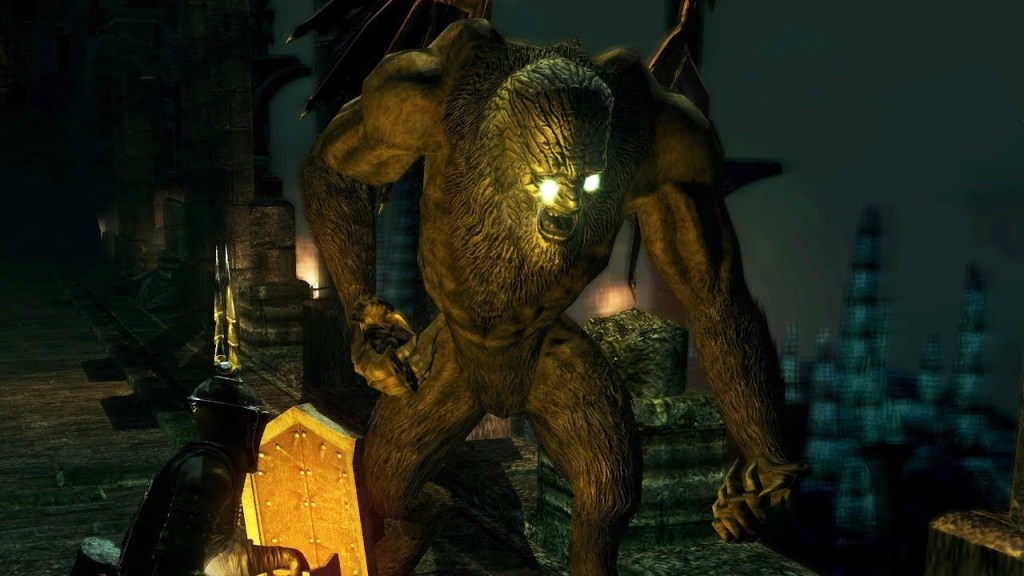
The Maneaters – The Two Bosses
Few boss types in the Soulsborne series are more iconic than “The Two Bosses.” More accurately described as the “multiple bosses,” these boss fights test your ability to take on more than one intimidating escapee from Hell’s darkest corners at once. One of the most iconic instances of this mechanic the boss fight with Ornstein and Smough in Dark Souls.
The Maneaters in Demon’s Souls set an interesting precedent for this style of fight. Like some of the later examples of “The Two Bosses,” the second Maneater doesn’t even appear until you’ve done enough damage to the first.
Still, seeing two bosses on your screen at the same time immediately triggers that “How am I supposed to possibly overcome this?” feeling of panic which defines the Soulsborne games. Subsequent games in this series would improve upon the basic concept of the Maneaters fight, but installments such as Dark Souls 2 also typically over-relied on this idea and eventually diluted the fear it’s meant to inspire.
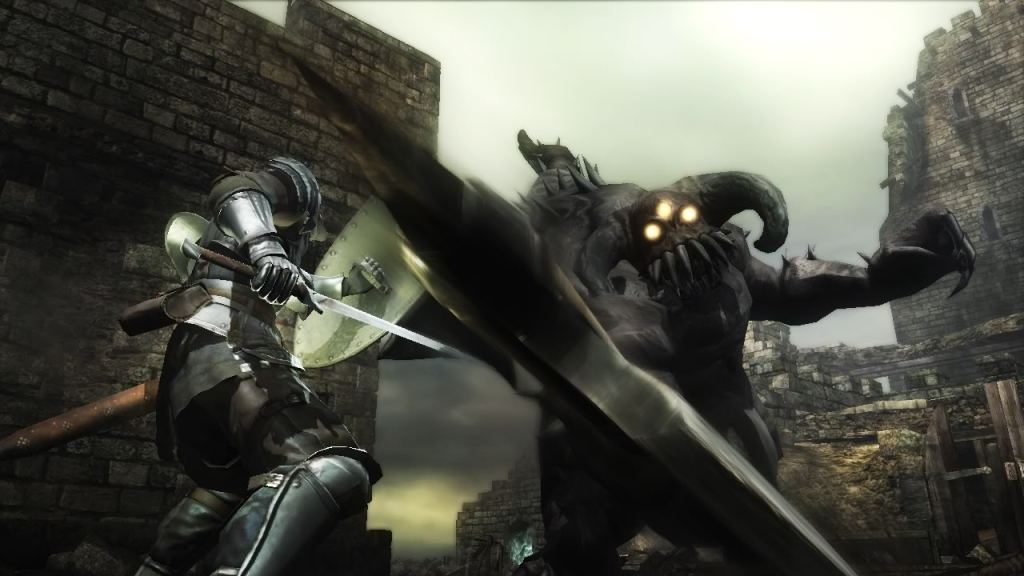
The Vanguard – The Tutorial Boss
In most games, ‘The Turorial Boss” is meant to be the easiest boss. They’re the boss that makes you feel warm, fuzzy, and powerful. That’s not always the case with the tutorial bosses in the Soulsborne games. More often than not, they’re designed to be the boss that teaches you the patience and skill needed to move on.
The Vanguard represents an especially interesting twist on the idea of the tutorial boss within this series. He’s the first boss you encounter, and while it’s technically possible to kill him, the narrative is designed to ensure that the game continues even if you die.
Bloodborne utilized a nearly identical forced death concept with a regular enemy, but aside from that mechanic, the Vanguard still feels like the spiritual successor to bosses like The Asylum Demon in Dark Souls, which was also designed to “give the player a taste” of what was to come.
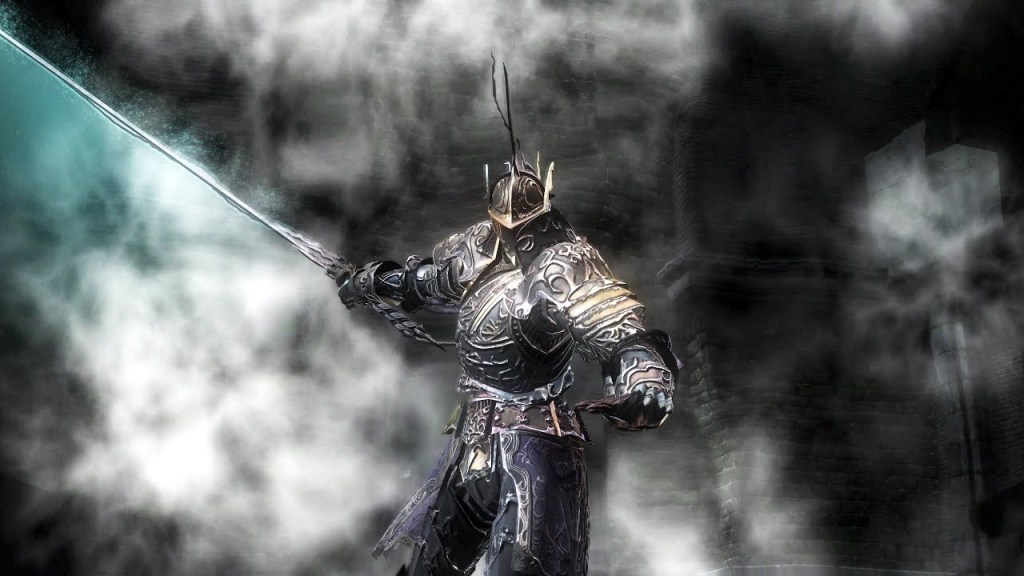
The Penetrator – The Knight Boss
This category is a bit fuzzier as not every knight in the Soulsborne series is an example of “The Knight Boss.” Every now and then, though, you encounter a boss fight that requires you to battle a knight-like enemy who typically wields a sword and doesn’t have any additional abilities beyond being very skilled with said weapon.
The Penetrator (go ahead and laugh; it’s funny) is the template for “The Knight Boss.” If you’re playing Demon’s Souls as a melee character, you’ll only be able to defeat The Penetrator if you expertly use every melee mechanic in the game, plus a few that are rarely demanded from you outside of encounters such as this one.
Some of the most notoriously difficult bosses in the history of the Soulsborne series (including Artorias the Abysswalker) are just an expansion of the Penetrator mechanics. They’re basically a bigger, faster, and sometimes better version of your own character. Think of them as your Shadow Link from Zelda II: The Adventure of Link.
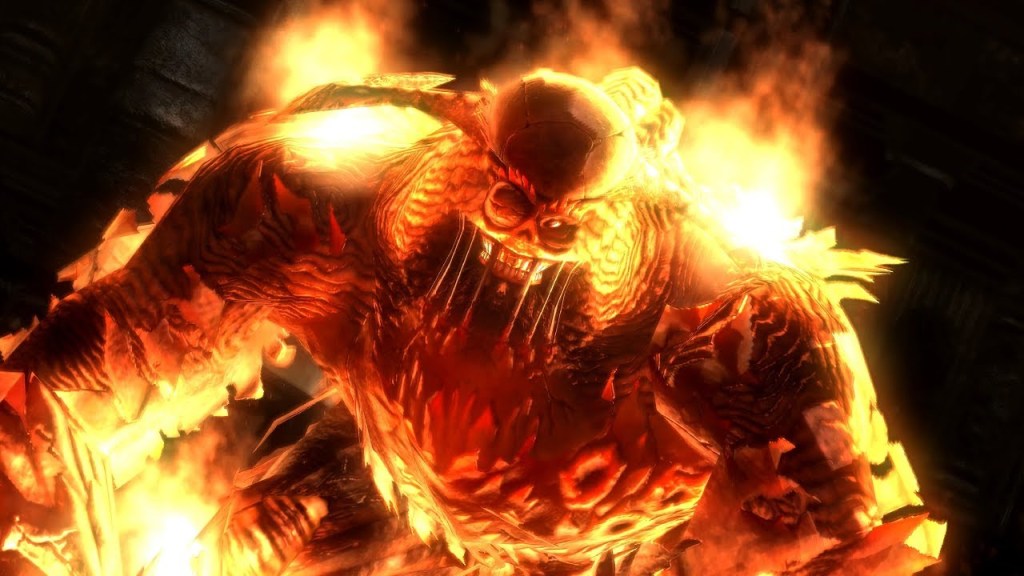
The Flamelurker – The Roadblock Boss
Oh, “The Roadblock Boss.” The roadblock isn’t necessarily the biggest boss in a Soulsborne game. More often than not, they’re usually not even that important to the lore of the games. What they are, though, is the boss that will suddenly and shockingly bring your progress to a screeching halt.
The Flamelurker is the definitive early example of that concept. Everything about the Flamelurker is designed to frustrate (and kill) you, but the thing that really sets this boss apart is how fast he is. In fact, the Flamelurker is so much quicker than every other boss in the game that you may start to wonder whether or not his power level was the result of some kind of mistake on the part of the designers.
Yet, subsequent FromSoftware games confirmed that the studio absolutely intended to randomly throw a boss fight at you that simply didn’t feel fair. The Smelter Demon in Dark Souls 2 feels like a direct tribute to the Flamelurker.

Tower Knight – The Giant Boss
The “Giant Boss” is certainly not a concept unique to the Soulsborne franchise. It’s just a boss whose intimidation factor and skills are based on their daunting size. Some Soulsborne games, most notably Dark Souls 2, feature quite a few of these bosses.
Yet, all of them owe something to the Tower Knight. This visually iconic boss surely sent a shiver down the spine of every player who laid eyes on him for the first time. He was an early game boss who looked like he could be the final boss in nearly any other game.
It was also the Tower Knight who taught us that the biggest bosses in these games are rarely the most challenging. In fact, the opposite is typically true.
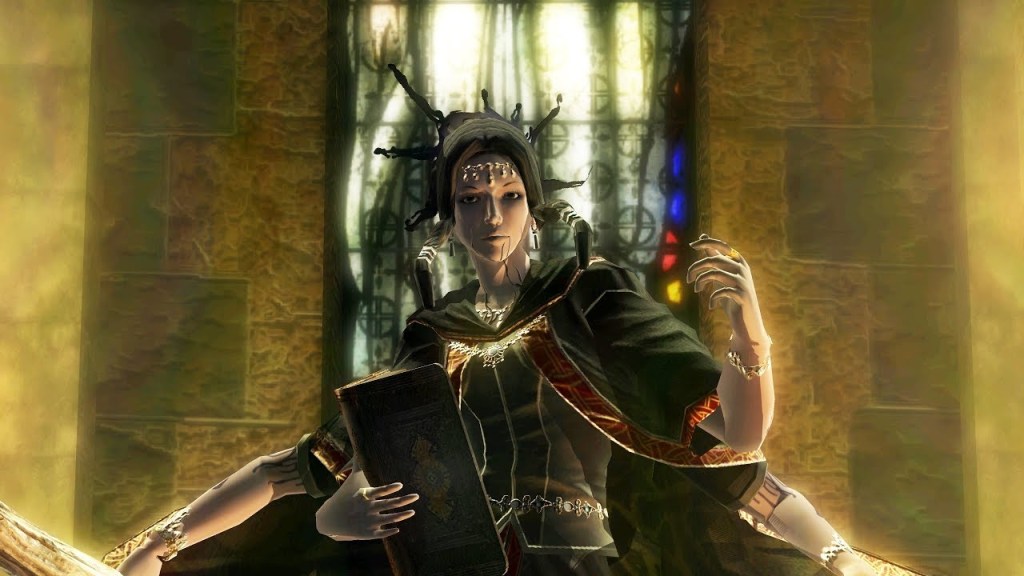
Fool’s Idol – The Clone Boss
We’re not sure why, but the Soulsborne game designers love to include bosses who create clones of themselves at some point during a boss fight. Our best theory is that it’s a tribute to old-school bosses who used similar tricks. It’s also just as likely that they rightfully recognize that such boss fights are typically quite annoying.
That was certainly the case with Fool’s Idol, who was physically quite weak outside of her ability to create clones of herself, forcing you to play a game of “spot the real one.” It’s surprisingly difficult to spot the real Fool’s Idol among her clones, which makes this boss relatively challenging, even across multiple playthroughs.
Despite the appropriate number of clones Fool’s Idol inspired in later Soulsborne games, few of the later bosses embodied the cloning mechanic better than her. She was a thematically interesting boss whose powers and abilities perfectly complemented her lore as well as the environment of the fight itself.
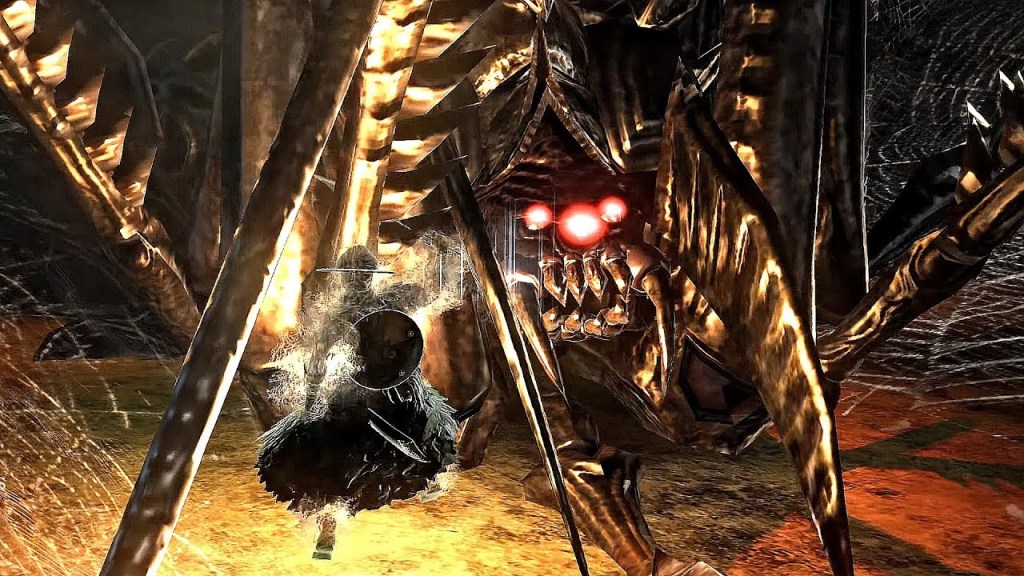
Armor Spider – The Cheap Boss
There’s never been a Soulsborne game that featured just one example of “The Cheap Boss.” Every game in the Souls franchise throws a few fights at you who aren’t necessarily especially difficult but instead take advantage of some kind of cheap mechanic that makes them incredibly frustrating.
Armor Spider isn’t the first or only cheap boss in Demon’s Souls, but it is the most memorable early example of this type of encounter. Armor Spider isn’t particularly tough, but the fact that you have to navigate a narrow corridor full of projectiles in order to get to it makes this one of the deadliest boss fights in all of Demon’s Souls.
Future Soulsborne games would gleefully expand the use of environmental hazards, such as the infamous archers of Anor Londo in Dark Souls.
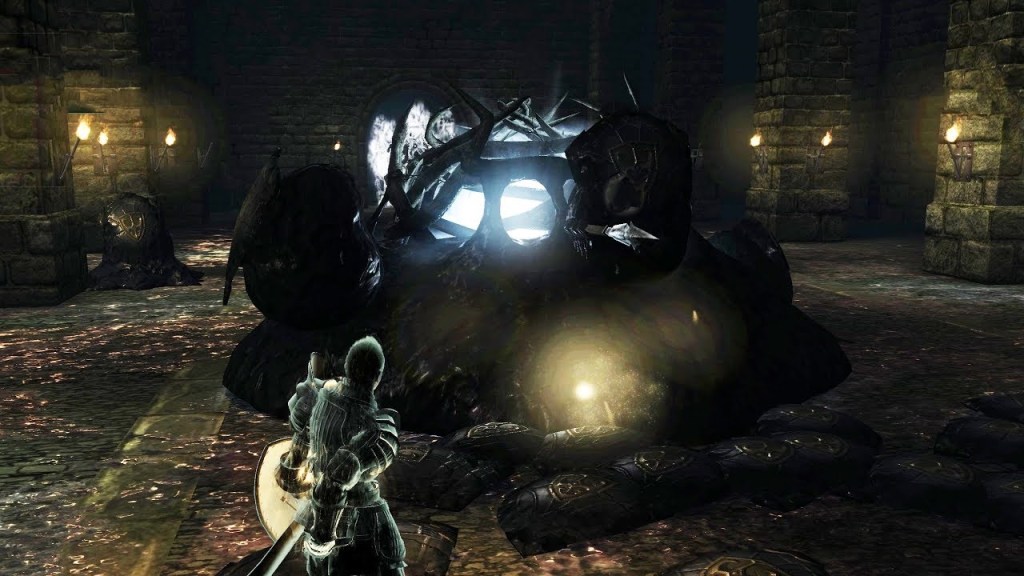
The Phalanx – The Surprisingly Easy Boss
In a series defined by its difficulty, the “Surprisingly Easy Boss” not only stands out from the pack but often serves as an equally surprising source of frustration among fans. After all, who plays a Soulsborne game for an easy boss fight?
The Phalanx is the almost universally recognized first instance of a “Surprisingly Easy Boss” in these games. He may look intimidating, but The Phalanx goes down without much in the way of a fight. In fact, he’s such an easy early boss that he might actually make you a slightly worse player.
Future games in the series wouldn’t be quite so generous with their early bosses, but from the Covetous Demon in Dark Souls 2 to the Cleric Beast in Bloodborne, you can typically count on a FromSoftware title featuring at least one of these shockingly simple battles.

The Storm King – The Gimmick Boss
Somewhere between “The Cheap Boss” and “The Roadblock Boss” lies “The Gimmick Boss.” Sometimes, this boss is difficult. Sometimes, this boss is easy. The one thing that you can always count on is that this boss relies on one central mechanic.
The Storm King is certainly one of Demon’s Souls’ most notable examples of this series-wide formula. The gimmick of this particular battle is that you’re wielding a powerful sword that’s uniquely capable of taking down this boss and his minions. While it’s not especially satisfying, this setup does lead to a visually creative fight that offers a nice break from the flow of the rest of the game.
Unfortunately, not all future gimmick bosses would prove to be quite as enjoyable or creative. The living platformer puzzle nightmare that is Dark Souls‘ Bed of Chaos, for instance, is a testament to that tragic truth.
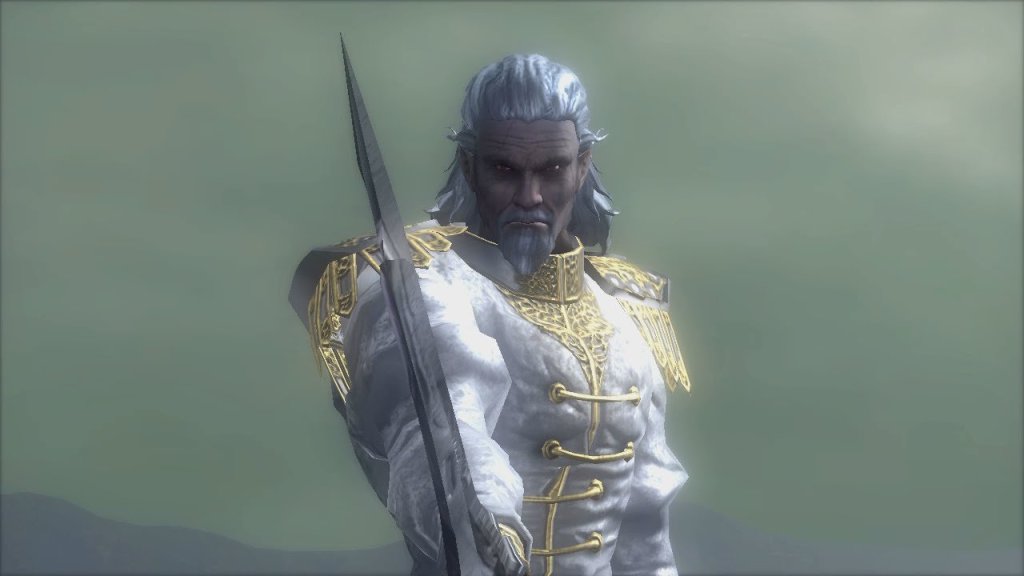
Old King Allant – The Overhyped Boss
“The Overhyped Boss” is similar to the surprisingly easy boss. The biggest difference is that these bosses are usually hyped up in some way that creates a level of expectations that the showdown itself simply cannot deliver on.
There’s perhaps no better example of this in the entirety of the Soulsborne series than Demon’s Souls’ final boss, Old King Allant. Despite being the centerpiece of so much of the game’s lore, and despite looking like an all-time badass warrior, Old King Allant proves to be little more than an exposition dump who is closer to an elaborate cutscene than an actual boss fight.
Truth be told, this franchise has typically struggled when it comes to offering a final boss that lives up to what came before. Even when they’re not the final boss, you can expect to be let down by at least one big bad in a Soulsborne game who just can’t live up to expectations.
